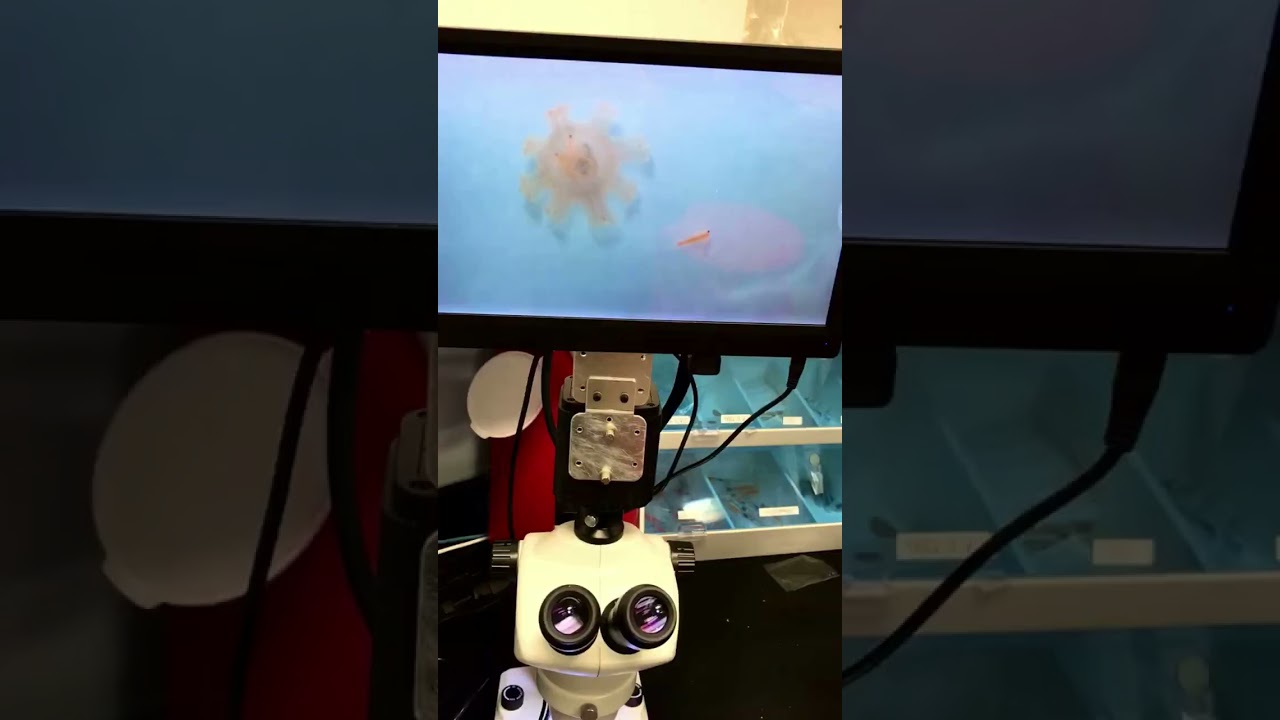Summary:
1. Introduction to jellyfish and their unique characteristics.
2. The amazing life cycle of jellyfish, from polyp to adult.
3. The role of the jelly aquarist in raising baby jellies and their importance in studying these creatures.
4. Fascinating facts about jellyfish, including their sting, propulsion, and diverse species.
5. The importance of conservation efforts to protect jellyfish and the marine ecosystem.
The life cycle of a jelly. The jelly aquarist at the N.C. The aquarium at Pine Knoll Shores is raising baby jellies and made a video to show the life cycle.
Jellyfish are unique creatures that have fascinated scientists and the general public for centuries. Their graceful movements and ethereal appearance have made them popular subjects for art, photography, and even aquarium exhibits. In this article, we will delve into the fascinating life cycle of jellyfish, uncover some surprising facts, and highlight the important role of jelly aquarists in studying and conserving these mesmerizing creatures.
Jellyfish undergo a remarkable journey from their humble beginnings as tiny polyps to becoming fully grown adults. This life cycle is divided into several distinct stages, each with its challenges and adaptations that contribute to the survival of these incredible organisms.
It all begins with the release of jellyfish larvae into the water. These larvae, known as planulae, float freely until they find a suitable surface to attach themselves to. Once attached, they transform into polyps, which resemble small sea anemones. Polyps are sessile creatures, meaning they remain attached to the surface and extend their tentacles to capture food.
During this stage, the polyps reproduce asexually by budding, creating genetically identical copies of themselves. This ability to reproduce both sexually and asexually allows jellyfish to rapidly populate areas favorable for their survival. However, it is important to note that not all jellyfish species follow the same life cycle pattern.
After the polyp stage, the jellyfish transform remarkably into a miniature version of their adult selves. These tiny jellyfish, also known as ephyrae, break free from the polyp and begin to swim freely in search of food. Ephyrae have small tentacles and lack the bell-shaped body typically associated with adult jellyfish.
As they grow, ephyrae continue to develop, eventually reaching the adult stage. The bell-shaped body characterizes this stage and the long, trailing tentacles we commonly associate with jellyfish. The adult jellyfish are now capable of sexual reproduction, releasing eggs or sperm into the water to initiate the next generation of jellyfish.
In the N.C. In the aquarium at Pine Knoll Shores, jelly aquarists play a crucial role in raising baby jellies and studying their life cycle. These dedicated individuals carefully monitor the water conditions, feeding schedules, and overall health of the jellies under their care. By studying captive jellyfish populations, researchers can gain valuable insights into their reproductive behaviors, adaptability to changing environments, and potential impacts of human activities on their survival.
It is worth noting that jellyfish have some fascinating characteristics that contribute to their mesmerizing nature. One such characteristic is their stinging cells, known as nematocysts, which serve as a defense mechanism and a means to capture prey. The strength of a jellyfish sting can vary depending on the species, with some capable of causing mild discomfort to humans and others posing a more significant threat.
Another intriguing aspect of jellyfish is their mode of propulsion. Instead of muscles, jellyfish rely on pulsations of their bell-shaped bodies to move through the water. This unique method of locomotion allows them to gracefully glide through the ocean currents, captivating anyone fortunate enough to witness their elegant movements.
Beyond their unique characteristics, jellyfish encompass various species, each with distinct traits and adaptations. From the colorful and venomous box jellyfish to the delicate and bioluminescent deep-sea jellyfish, these creatures occupy diverse habitats and play vital roles in their respective ecosystems.
However, despite their captivating nature, jellyfish populations face numerous threats today. Climate change, pollution, overfishing, and habitat destruction all contribute to the decline of these magnificent creatures. Efforts are underway to raise awareness about the importance of jellyfish conservation and to implement sustainable practices that protect their fragile ecosystems.
In conclusion, the life cycle of jellyfish is a fascinating journey that showcases the incredible adaptations and survival strategies of these unique creatures. From their humble beginnings as polyps to their graceful movements as adults, jellyfish continue to captivate and inspire awe in people of all ages. By studying their life cycle and promoting conservation efforts, we can ensure the long-term survival of jellyfish and protect the delicate balance of our marine ecosystems. So, let’s dive deep into the vibrant world of jellyfish and appreciate the intricate beauty of these gelatinous wonders. #DontBeJelly #SeaJelly #peanutbutterjellytime
*****
Source Description
The life cycle of a jelly. The jelly aquarist at the N.C. The aquarium at Pine Knoll Shores is raising baby jellies and made a video to show the life cycle.

